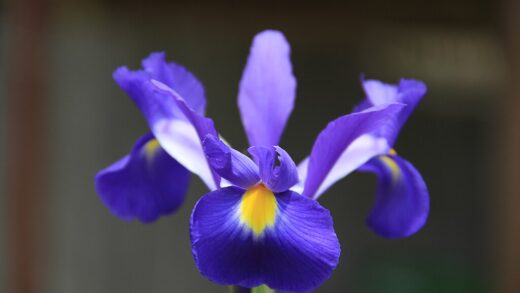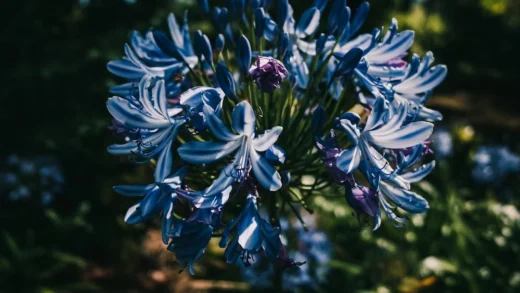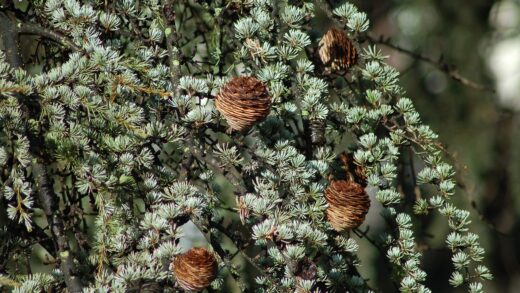Successfully establishing common mallow in your garden begins with a solid understanding of its planting and propagation techniques. This hardy and adaptable plant can be introduced to your landscape in several ways, each with its own set of advantages. Whether you are starting from a tiny seed, transplanting a nursery-grown specimen, or dividing an existing clump, the right approach will ensure a future of vigorous growth and abundant, beautiful blooms. This guide will walk you through the essential steps, from preparing the perfect seedbed to mastering the art of vegetative propagation. By following these professional methods, you can confidently multiply your stock and fill your garden with this charming cottage garden staple.
The foundation of any successful planting is the preparation of the site, a step that should never be overlooked. Common mallow is not excessively particular, but it will certainly reward you for providing it with a well-drained and sunny location. Before planting, take the time to clear the area of all weeds and debris, as these will compete with your new plants for water and nutrients. It is also the perfect opportunity to improve the soil structure. Digging in a generous amount of organic matter, such as garden compost or well-rotted manure, will enhance fertility and, most importantly, improve drainage, which is critical for preventing root rot.
Timing is another crucial factor to consider when planting common mallow. If you are starting with seeds, they can be sown directly into the garden in either spring or autumn. An autumn sowing often gives the plants a head start, allowing them to establish a strong root system over the winter for a more robust performance the following year. For young plants or seedlings started indoors, it is best to wait until all danger of frost has passed in the spring before planting them out. Hardening them off gradually over a week will help them acclimate to outdoor conditions and prevent transplant shock.
Proper spacing is essential to ensure the long-term health and vitality of your plants. Common mallow can grow into a substantial clump and requires adequate room to flourish. When planting, space individual plants approximately 40 to 60 centimeters apart. This spacing allows for sufficient air circulation around the foliage, which is one of the most effective strategies for preventing common fungal diseases like rust and powdery mildew. It also ensures that each plant has access to enough sunlight, water, and soil nutrients without being overcrowded by its neighbors.
Propagation from seed
Propagating common mallow from seed is an incredibly easy and rewarding process, making it an ideal method for gardeners of all skill levels. The seeds have a high germination rate and require very little special treatment to sprout successfully. You can choose to sow them directly into their final garden position or start them indoors in trays to get a head start on the season. Direct sowing is often preferred for its simplicity, as it avoids the need for transplanting, which can sometimes set back the growth of young seedlings.
More articles on this topic
For direct sowing in the garden, prepare the seedbed by raking the soil to a fine tilth. The seeds can be sown in either late autumn or early spring. An autumn sowing often results in earlier and more vigorous plants the following year. Scatter the seeds lightly over the prepared soil and cover them with a very thin layer of fine soil or compost, no more than a few millimeters deep, as some light can aid in germination. Water the area gently with a fine rose on a watering can to avoid dislodging the seeds.
If you prefer to start your seeds indoors, fill seed trays or small pots with a good-quality seed-starting compost. Sow the seeds on the surface and lightly press them into the compost, then cover with a fine dusting of compost or vermiculite. Moisten the compost and place the tray in a warm, bright location, such as a sunny windowsill or a greenhouse. Germination typically occurs within 10 to 14 days. Once the seedlings have developed their first true leaves, they can be pricked out and potted on into individual pots to grow on.
Once your indoor-sown seedlings are large enough and the risk of frost has passed, they must be hardened off before being planted in the garden. This process gradually acclimates the young plants to the more challenging outdoor conditions of wind, fluctuating temperatures, and direct sunlight. Over a period of 7 to 10 days, place the plants outside in a sheltered spot for a few hours each day, gradually increasing their exposure time. This critical step significantly reduces the risk of transplant shock and ensures a smooth transition to their new home.
Transplanting seedlings and young plants
The process of transplanting common mallow, whether it be seedlings you have grown yourself or young plants purchased from a nursery, is a critical step that dictates their future success. The key to successful transplanting is to minimize the stress on the plant’s root system. Water your seedlings or young plants thoroughly an hour or two before you plan to move them. This ensures the root ball is well-hydrated and holds together better during the transfer, reducing the risk of root damage and dehydration.
More articles on this topic
When you are ready to plant, dig a hole in your prepared garden bed that is slightly wider and the same depth as the pot the plant is in. The goal is to have the top of the root ball sit level with the surrounding soil surface. Planting too deep can lead to stem rot, while planting too high can cause the roots to dry out. Gently remove the plant from its container, taking care not to pull on the stem. If the plant is root-bound, with roots circling the bottom of the pot, gently tease them out to encourage them to grow outwards into the new soil.
Place the plant into the prepared hole, ensuring it is upright. Backfill the hole with the excavated soil, gently firming it down around the root ball to eliminate any large air pockets. These air pockets can cause the roots to dry out and hinder the plant’s ability to establish itself. Once the hole is filled, create a small, circular mound of soil around the base of the plant to form a watering basin. This helps to direct water straight to the root zone where it is needed most.
The final and most crucial step is to water the newly transplanted mallow thoroughly. This initial watering is vital as it settles the soil around the roots, ensuring good contact and eliminating any remaining air pockets. For the first couple of weeks, monitor the plant closely and keep the soil consistently moist but not waterlogged. This will help the plant recover from the transplant process and encourage the rapid development of new roots into the surrounding garden soil, establishing a strong foundation for future growth.
Propagation by division
Division is an excellent method for propagating established perennial varieties of common mallow and for rejuvenating older, overcrowded clumps. This technique involves lifting a mature plant and carefully splitting it into several smaller sections, each with its own set of roots and shoots. The best time to divide common mallow is typically in the early spring, just as new growth is beginning to emerge. Dividing at this time gives the new sections a full growing season to establish themselves before the onset of winter.
To begin the process, use a garden fork to carefully dig around the entire perimeter of the plant clump, taking care to go deep enough to get under the main root mass. Gently lift the entire clump from the ground and place it on a tarpaulin or a clear patch of ground. Use the fork or your hands to gently shake off the excess soil so you can clearly see the root structure and the individual crowns. This will help you identify the best places to make your divisions.
Once the clump is lifted, you can proceed with splitting it. For smaller clumps, you may be able to pull them apart by hand into sections. For larger, more established clumps, you may need to use two garden forks inserted back-to-back in the center of the clump to lever it apart. In some cases, a sharp, clean spade or an old serrated knife may be necessary to cut through the dense crown. Ensure that each new division has a healthy portion of roots and at least one or two strong growing points or buds.
After dividing the clump, it is important to replant the new sections as quickly as possible to prevent the roots from drying out. Discard any old, woody, or unproductive parts from the center of the original clump and replant only the healthy, vigorous outer sections. Plant them at the same depth they were previously growing and water them in thoroughly to settle the soil. Division not only provides you with new plants for free but also invigorates the parent plant, promoting more robust growth and better flowering in the subsequent season.
Taking and rooting cuttings
Propagating common mallow from cuttings is a reliable way to create new plants that are genetically identical to the parent. This method is particularly useful for preserving the characteristics of a specific cultivar that you admire. The ideal type of cutting to take from common mallow is a basal cutting. These are young shoots taken from the very base of the plant in the spring when they are about 8 to 10 centimeters tall. These shoots are vigorous and tend to root more readily than cuttings taken from higher up the stem.
To take a basal cutting, use a sharp, clean knife to sever the shoot as close to the crown of the plant as possible, ideally with a small piece of the woody rootstock attached at the base. This small piece of older tissue at the heel of the cutting often contains dormant buds and can improve the chances of successful rooting. Once you have taken the cutting, carefully trim off the lower leaves to leave only two or three leaves at the top. This reduces water loss through transpiration while the cutting is developing its new root system.
For the best results, it is advisable to dip the base of the cutting into a rooting hormone powder or gel. This is not strictly necessary as mallow often roots well without it, but it can significantly speed up the process and increase the success rate by encouraging faster root development. Gently tap off any excess powder before inserting the cutting into a pot filled with a suitable rooting medium. A mix of 50% peat-free compost and 50% perlite or sharp sand provides the ideal balance of moisture retention and drainage.
Insert the prepared cuttings into the rooting medium, ensuring the first set of leaves is just above the surface. Water the pot gently and then cover it with a clear plastic bag or place it in a propagator to create a humid environment. This humidity is crucial for preventing the cuttings from wilting before they have formed roots. Place the pot in a bright location, but out of direct sunlight, and keep the compost moist. Roots should begin to form within a few weeks, and you will know the cutting has taken when you see signs of new leaf growth.



















